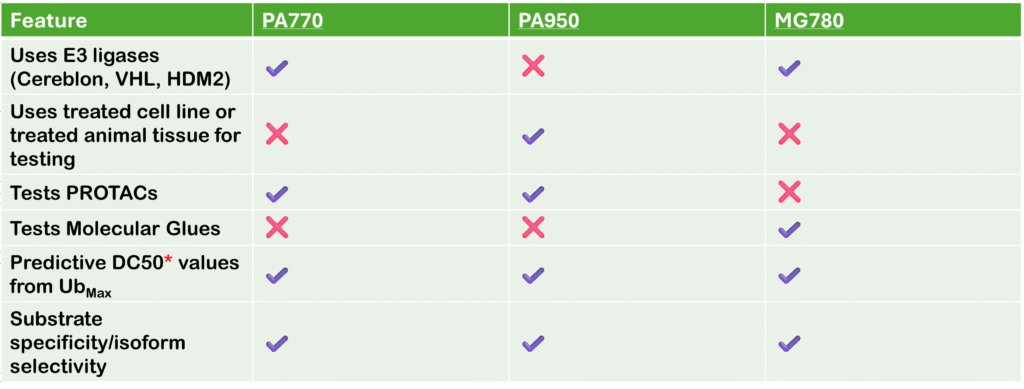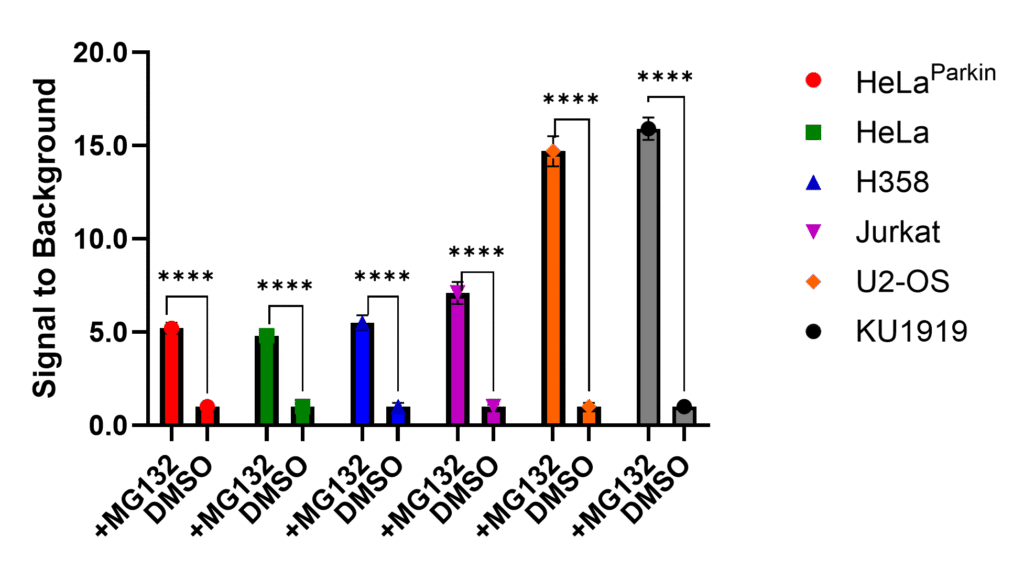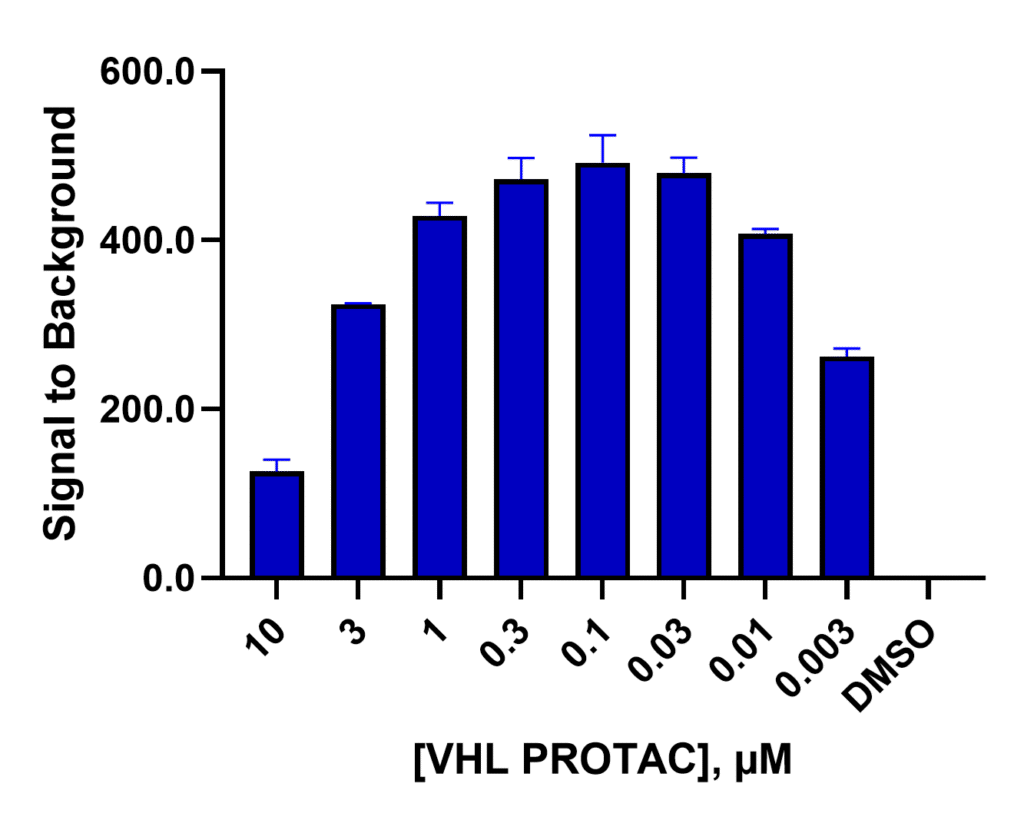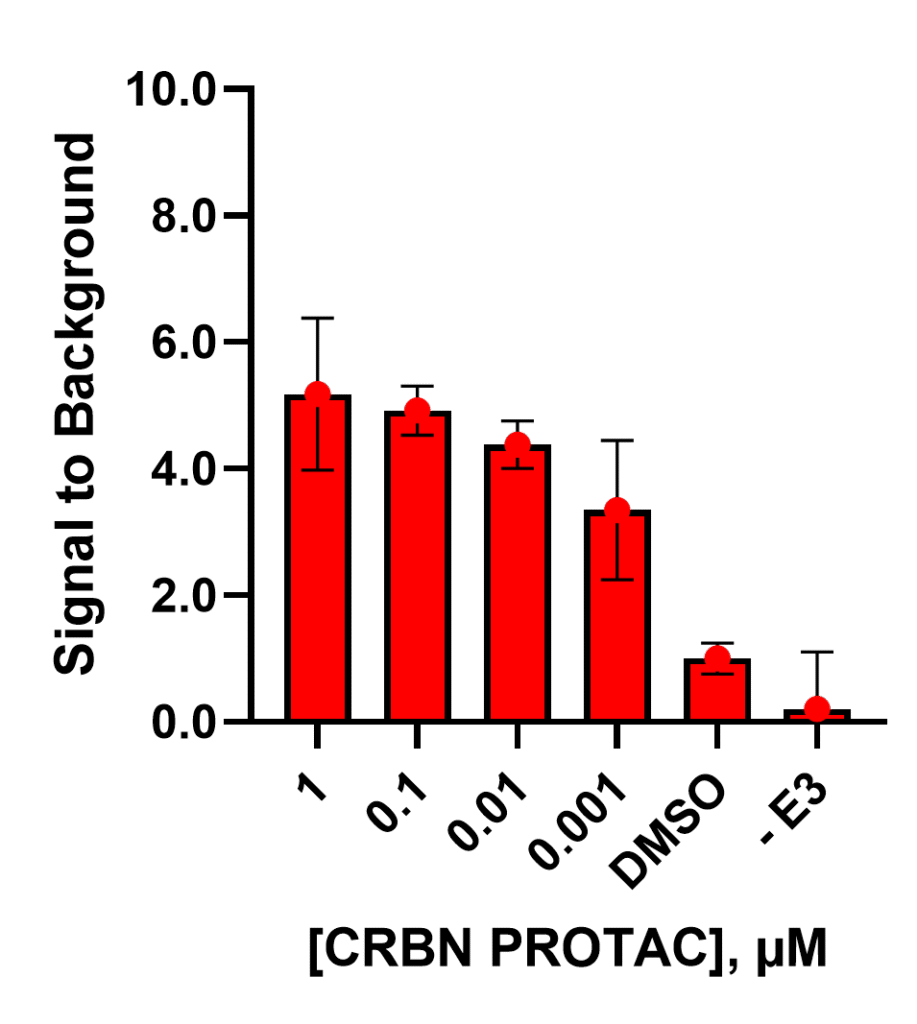The PA950 and PA770 are important assays for studying ubiquitination due to an E3 ligase or PROTAC, and the launch of the MG780 kit also extends this functionality to Molecular glues, opening up new options to test and verify functionality of compounds prior to later stage development, allowing ubiquitination to be confirmed which minimizes turnaround time.
PROTACs exhibit some developmental challenges, requiring consistent turnaround in order to properly optimize the design of that PROTAC, and while Molecular Glues have immense potential, the current lack of reliable approaches for rational design nessicates large screens in order to identify molecules of interest. A breakdown of these kits use cases follow:

The plate based design of the PA950 and PA770 allow for fast, reliable, high-throughput screening in both 96-well and 384-well format but these kits must be properly optimized to work with the specific target and antibody. The dynamic nature of ubiquitination and degradation necessitates case-by-case optimization and we always suggest optimization of reagents in 96-well prior to transitioning to 384-well. Optimization of key elements of this assay will allow for collection of quality data, better reproducibility and successful outcomes. Guidelines follow:
Different Cell lines produce different levels of ubiquitination due to differences in endogenous expression of E3 ligases, deubiquitinaing enzymes, proteasome activity and the variation of cofactors that are required for ubiquitin signaling.

When optimizing we suggest dose response curves to confirm effective PROTAC or molecular glue activity. More specifically titration of PROTACs allows for optimization of degradation efficacy with minimal off-target effects while with molecular glues this method is used to best induce ubiquitination.


Titration of the POI between 5nM and 40nM will help determine the optimal concentration for ubiquitination. A POI concentration that is too high risks saturation of the substrate and reduces the sensitivity of the assay. A POI concentration that is too low will result in weak signals and obscure ubiquitination potential.

We recommend starting with the recommended antibody concentration and then titrating to optimize signal. We strongly suggest using an antibody with supporting data and balancing the antibody to avoid excess noise and weak signal.
Not all antibodies are suitable for use with this assay, so it is strongly recommended to test several antibodies to determine the best antibody to use.



With ubiquitin’s core functions in plants and animals being so similar it has long been speculated that insights into the
The functional consequences of protein polyubiquitination are determined by the type of ubiquitin chain assembled on the substrate. Among the
While direct K-RAS inhibitors represent a major therapeutic advance, targeting this oncoprotein remains a significant challenge due to limited druggable
Pan-selective Tandem Ubiquitin-Binding Entities (TUBEs) are engineered, high-affinity reagents composed of multiple ubiquitin-associated (UBA) domains that bind polyubiquitin chains with
LifeSensors is pleased to bring attention to some of our academic colleagues who have used our products in the past
Different lysines on ubiquitin are involved in forming different ubiquitin chains, with K48-linked chains primarily signaling for proteasomal degradation, while
With ubiquitin’s core functions in plants and animals being so similar it has long been speculated that insights into the
The functional consequences of protein polyubiquitination are determined by the type of ubiquitin chain assembled on the substrate. Among the
While direct K-RAS inhibitors represent a major therapeutic advance, targeting this oncoprotein remains a significant challenge due to limited druggable
Pan-selective Tandem Ubiquitin-Binding Entities (TUBEs) are engineered, high-affinity reagents composed of multiple ubiquitin-associated (UBA) domains that bind polyubiquitin chains with
LifeSensors is pleased to bring attention to some of our academic colleagues who have used our products in the past
Different lysines on ubiquitin are involved in forming different ubiquitin chains, with K48-linked chains primarily signaling for proteasomal degradation, while